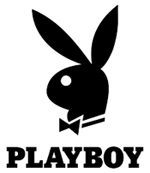 For many brands and organizations that have forever been reluctant to pitch Playboy because of nudity, the magazine brand just got a lot sexier as a possible PR and marketing vehicle.
For many brands and organizations that have forever been reluctant to pitch Playboy because of nudity, the magazine brand just got a lot sexier as a possible PR and marketing vehicle.
As part of a redesign rolling out next March, the print edition will no longer include pictures of naked women.
The magazine, which Hugh Hefner launched in 1953, will still run photography of scantily clad women, but nudity is out.
Last August, the company’s website dispensed with nudity and consequently watched the average age of its reader drop from 47 to just over 30, and its web traffic jump to about 16 million from about four million unique users per month, according to the New York Times.
The move was long overdue, in light of the ubiquity of online pornography.
Internet pornography has made the nude images in Playboy "passé," Scott Flanders, the company's chief executive, told the New York Times. "That battle has been fought and won. You're now one click away from every sex act imaginable for free."
Corey Jones, an editor at Playboy, told the Times, that the magazine will adopt a cleaner, more modern style. There will be still be a Playmate of the Month (rated PG-13). It hasn’t yet been decided whether there will be still be a centerfold.
Moving forward, Playboy should avoid the “lad boy” magazine model that took brands such as Maxim to soaring heights in the late 1990s and early 2000s before they started to shrivel away.
A tamer, more accessible Playboy opens up the possibility for brands that have been reluctant to pitch the magazine in the past to now try and cultivate a relationship with the publication’s reporters and editors (both for print and online).
The editorial changes, per the Times, have been tested with an eye on attracting millennials, or people born between the 1980s and early 2000s that marketers highly covet.
Online advertising, of course, has upended print media and Playboy is no exception. Its circulation has dropped from 5.6 million in 1975 to about 800,000 now, according to the Alliance for Audited Media.
That’s still a sizeable audience, though, particularly when stacked up against niche entertainment and lifestyle websites.


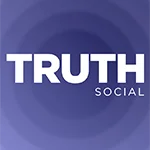 Trump Media & Technology Group today reported a $58.2M net loss on $4.1M in 2023 revenues, a disclosure that drove its stock price down 22.6 percent to $47.96.
Trump Media & Technology Group today reported a $58.2M net loss on $4.1M in 2023 revenues, a disclosure that drove its stock price down 22.6 percent to $47.96. Barry Pollack, an attorney at Wall Street’s Harris St. Laurent & Wechsler, has registered Julian Assange as a client with the Justice Dept. “out of an abundance of caution.”
Barry Pollack, an attorney at Wall Street’s Harris St. Laurent & Wechsler, has registered Julian Assange as a client with the Justice Dept. “out of an abundance of caution.”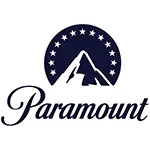 Paramount Global to slash 800 jobs in what chief executive Bob Bakish calls part of an effort to “return the company to earnings growth"... Rolling Stone editor-in-chief Noah Shachtman is exiting at the end of the month due to disagreements with chief executive Gus Wenner over the direction the magazine is taking... The New York Times broke the $1 billion barrier in annual revenue from digital subscriptions in 2023... Press Forward is investing more than $500 million to strengthen local newsrooms.
Paramount Global to slash 800 jobs in what chief executive Bob Bakish calls part of an effort to “return the company to earnings growth"... Rolling Stone editor-in-chief Noah Shachtman is exiting at the end of the month due to disagreements with chief executive Gus Wenner over the direction the magazine is taking... The New York Times broke the $1 billion barrier in annual revenue from digital subscriptions in 2023... Press Forward is investing more than $500 million to strengthen local newsrooms.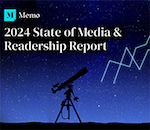 The majority of news articles are read within the first three days of publication, according to a recent report.
The majority of news articles are read within the first three days of publication, according to a recent report.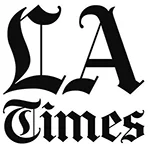 The Los Angeles Times gives pink slips to 115 people or 20 percent of its newsroom staff... TIME is also laying off about 30 employees, which is approximately 15 percent of its editorial staff... The Baltimore Banner, which was launched by Stewart Bainum in 2022 after he failed to buy the Baltimore Sun, added 500 subscribers per day in the three days following Sinclair Broadcast Group's deal to purchase the Sun.
The Los Angeles Times gives pink slips to 115 people or 20 percent of its newsroom staff... TIME is also laying off about 30 employees, which is approximately 15 percent of its editorial staff... The Baltimore Banner, which was launched by Stewart Bainum in 2022 after he failed to buy the Baltimore Sun, added 500 subscribers per day in the three days following Sinclair Broadcast Group's deal to purchase the Sun.


 Have a comment? Send it to
Have a comment? Send it to 
No comments have been submitted for this story yet.